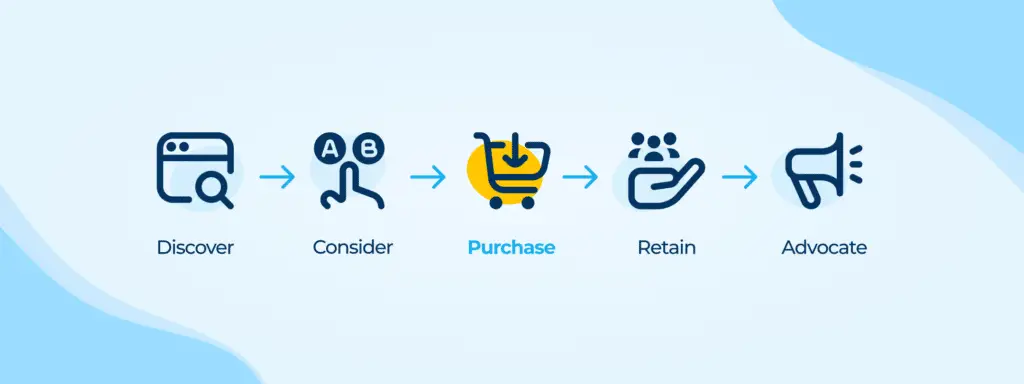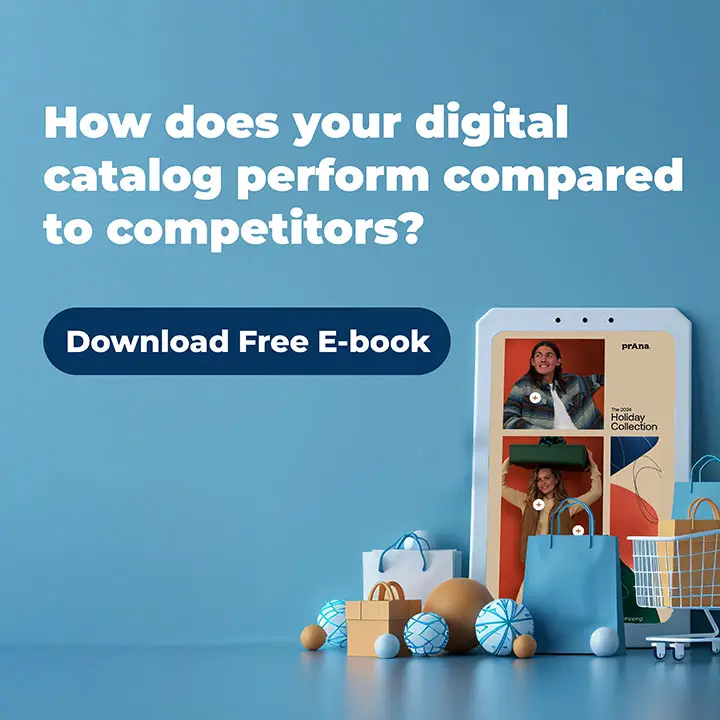We’ve created a Customer Journey article series that will dive into how Digital Catalogs can be a valuable tool in guiding the customer buyer journey. We’ll explore the touchpoints customers encounter throughout their buying journey, from the initial spark of interest online to fostering long-term loyalty offline. By understanding and optimizing each stage, you can build a robust customer journey that maximizes lead performance and cultivates brand advocates.
From Discovery to advocacy, this series will explore the complexities of creating a seamless online-offline customer journey.
The traditional customer journey is evolving. It is no longer linear—customers sometimes buy a product directly off Instagram when they see your ad, skipping the traditional move through the funnel and average marketing cycle window. Marketing assets must support this by incorporating all the phases in the journey. It is also vital to create a strong customer journey map before diving into optimizing your journey’s touchpoints.
Digital Catalogs and other discovery commerce tools have emerged as powerful tools for guiding customers throughout their journey. They provide the perfect combination of discovery, shoppable elements, and continuous conversion points.
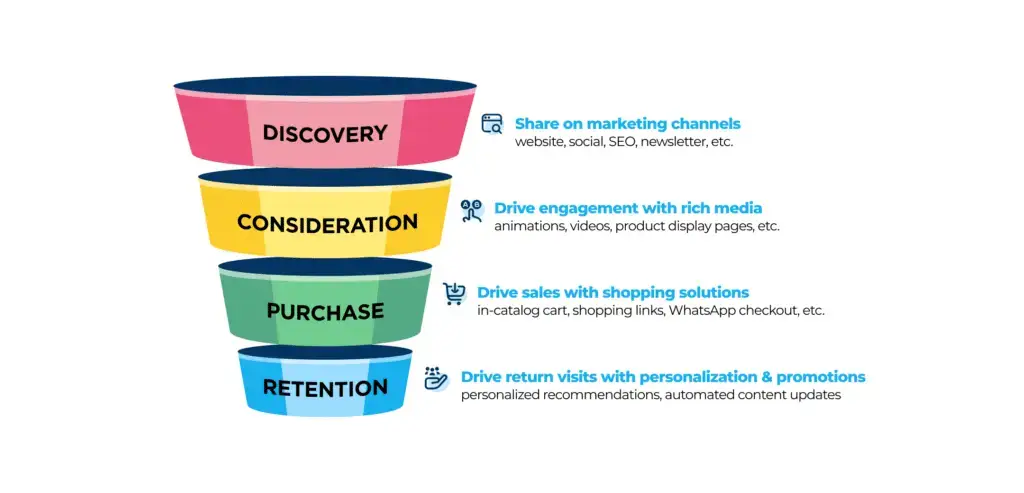
The power of the digital catalog alongside the customer journey
A digital catalog is a powerful tool for enhancing every customer journey stage. A digital catalog can provide a seamless experience that meets customers’ needs and expectations by integrating various features. Below, we explore how digital catalogs can be utilized across the five key stages of the customer journey: Awareness, Consideration, Purchase, Retention, and Advocacy.
1. Awareness/Discovery
In the initial phase of the customer journey, potential customers are just beginning to learn about your brand, products, or services. The goal is to attract their attention and make them aware of what you can offer.
How Digital Catalogs Help:
- Sharing on Marketing Channels: Digital catalogs can be easily shared across various marketing channels such as social media, email campaigns, and websites. By promoting your catalog through these platforms, you can reach a broader audience and increase brand visibility.
- SEO Optimization: Incorporating search engine optimization (SEO) strategies within your catalog ensures that it appears in relevant search results, driving organic traffic to your offerings.
- Clickable Product Links: By embedding clickable links via hotspots within your digital catalog, you allow users to explore further, leading them directly to your website or specific products.
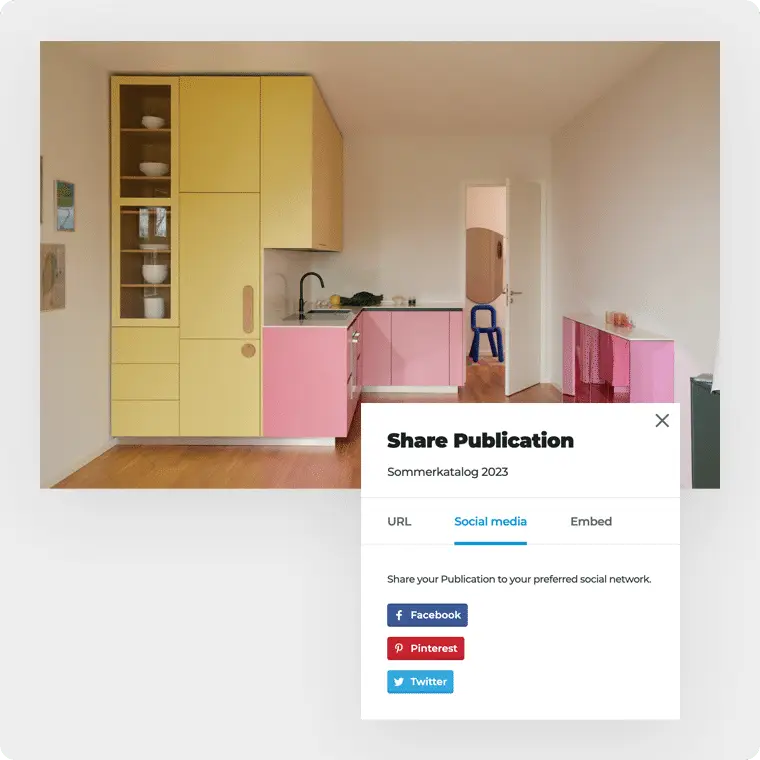
2. Consideration
Once customers have discovered your brand, the next step is to provide them with reasons to consider your products or services over competitors. This is where engagement tools within your digital catalog play a crucial role.
The consideration phase involves extensive research and engagement with your product offerings. Since people respond most effectively to interactive and visual content, digital catalogs’ engaging features make them ideal tools for this stage.
How Digital Catalogs Help:
- Engagement Tools: Features like hotspots, videos, and GIFs within the catalog help showcase your products more interactively. Hotspots can highlight specific product features, while videos and GIFs can demonstrate how products work or provide tutorials.
- Personalization: Tailoring the content within your digital catalog to reflect the customer’s preferences and browsing history can make the experience more relevant, increasing their likelihood of considering your offerings.
Impact on Customer Engagement: Engaging content that provides in-depth information and interactive experiences keeps potential customers interested and invested. These features allow them to visualize how the product fits into their lives, helping them make informed decisions.
3. Purchase/Decision
The purchase stage is where the customer makes the decision to buy. A well-designed digital catalog can simplify this process by providing multiple conversion points and checkout solutions, making purchasing easy and convenient.
Reducing friction points and building a journey that inspires your visitors and makes buying easy can significantly increase purchases by streamlining the shopping experience. Customers are more likely to complete their purchase When they encounter a seamless process, from product discovery to checkout. Features like intuitive navigation, clear calls to action, and integrated payment options eliminate common barriers that can cause frustration or hesitation.
How Digital Catalogs Help:
- Integrate e-commerce: Show website PDPs and allow customers to add products to their carts right in your publications. Build a rich, curated buying experience with a smooth checkout, allowing customers to add products to their carts directly from the catalog.
- Multiple Conversion Points: A digital catalog can include direct calls to action such as “Buy Now” buttons, contact options (like WhatsApp or email), and checkout links. This reduces friction in the purchasing process, allowing customers to quickly move from browsing to buying.
- Payment Integration: Seamlessly integrating payment options within the catalog ensures that customers can complete their purchases without leaving the platform.
Impact on Customer Engagement: By providing a streamlined purchasing experience, you reduce the likelihood of cart abandonment. The easy access to purchasing options encourages customers to finalize their decisions, leading to higher conversion rates.
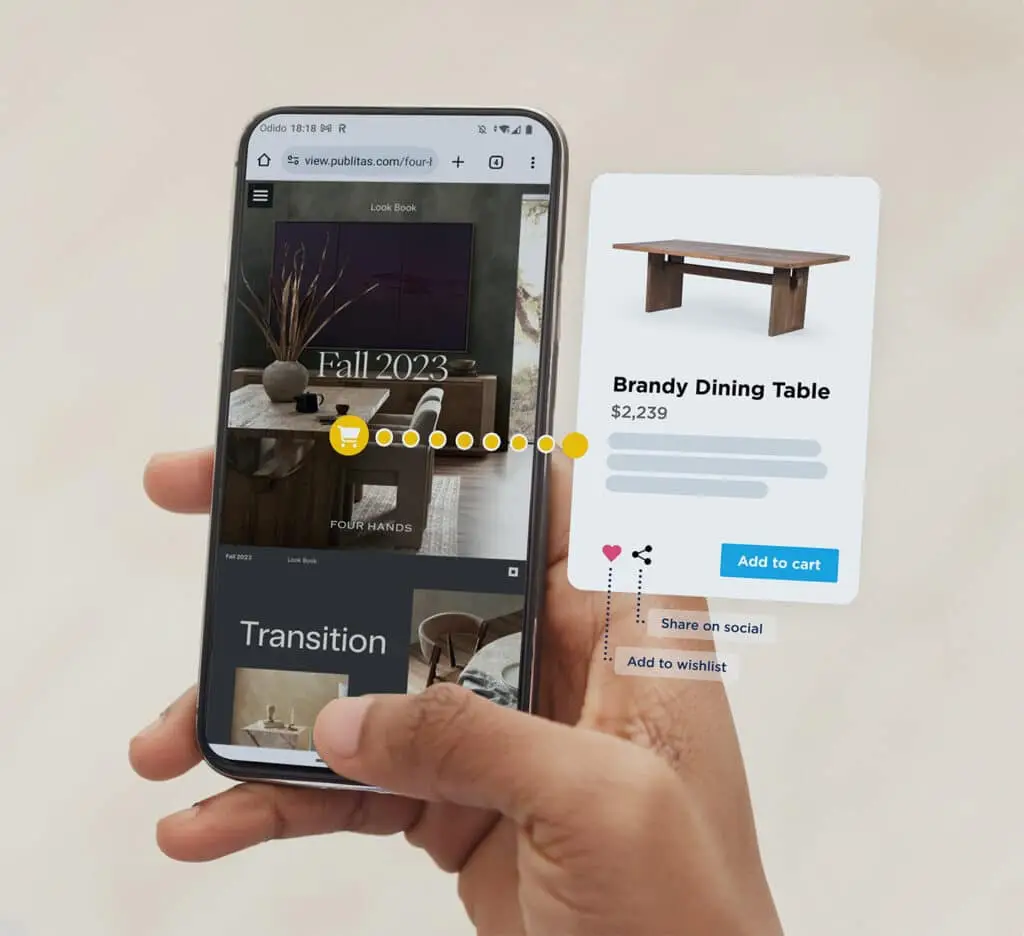
4. Retention
Customer retention is vital for sustaining long-term business success. Digital catalogs can play an essential role in keeping customers engaged even after their first purchase. A good way to increase customer retention and loyalty to your brand is to ensure you are creating an uncomplicated experience for them after their first purchase.
Do this by giving them a personalized experience that puts the right product in front of them at the right time and price. This can be done in multiple ways through personalization and clever marketing tactics.
How Digital Catalogs Help:
- Use channels like WhatsApp to distribute weekly promotions: Capture your customers’ attention when they are most likely to be planning their weekly shop by sending them a promotions-based leaflet on a Sunday morning or Sunday evening – this makes the customer’s life easier as they now have the information they need to plan their shopping for the week
- Rule-Based Promotions: Offering personalized promotions based on customer behavior, such as discounts on frequently viewed items or special offers for repeat buyers, can incentivize customers to return.
- Personalization: Continuously tailoring the content of your catalog to reflect previous purchases or browsing history keeps customers interested and reminds them of their positive experiences with your brand.
Impact on Customer Engagement: You increase the likelihood of repeat purchases by maintaining ongoing customer engagement through personalized offers and content. Retention strategies embedded within the catalog make customers feel valued, contributing to long-term loyalty.
5. Advocacy
The final stage of the customer journey is advocacy, where satisfied customers become promoters of your brand. A digital catalog can facilitate this by encouraging and making it easy for customers to share their experiences.
How Digital Catalogs Help:
- Social Sharing: Digital catalogs include built-in sharing features, enabling customers to share products, wishlists or entire catalogs with their friends and family on social media. This organic promotion helps in reaching new audiences through trusted recommendations.
- User-Generated Content: Encouraging customers to share their experiences and feedback through reviews or testimonials adds social proof and credibility to your offerings. These can then easily be added to your digital catalogs, improving the likelihood of customer confidence
Impact on Customer Engagement: When customers share your catalog and experiences with others, it amplifies your reach and builds trust with new potential customers. Advocacy transforms satisfied customers into brand ambassadors, further solidifying your reputation in the market.
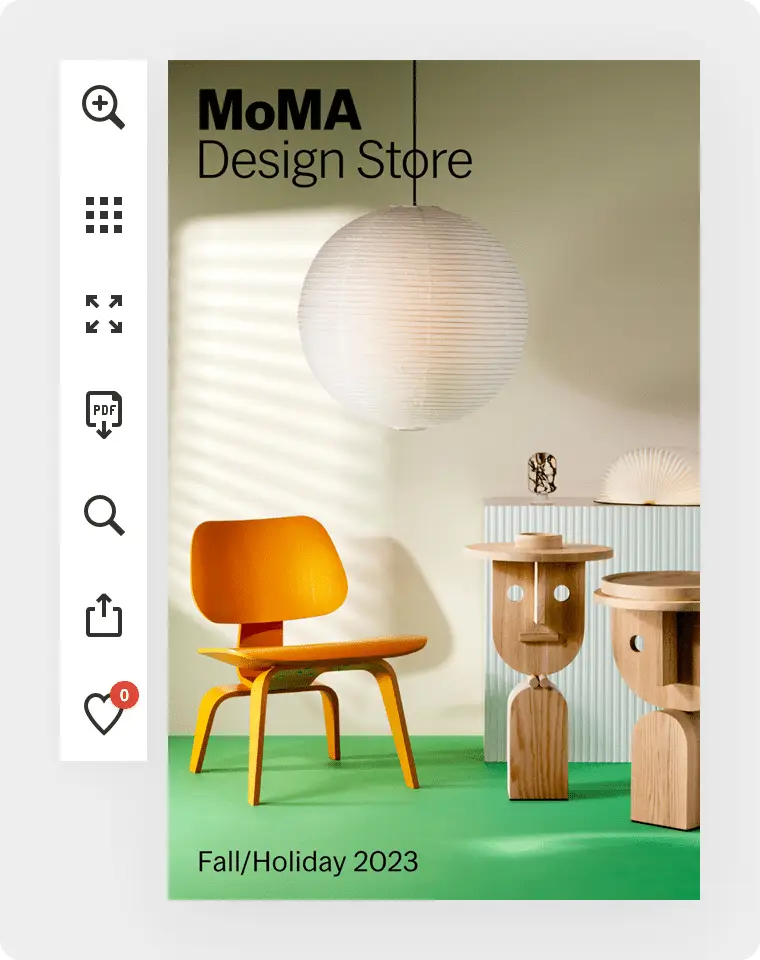
What Building an Interactive Catalog Customer Journey Looks Like
- Online Discovery: Interactive catalogs can be used alongside search engine optimization (SEO) and social media marketing to capture customer attention online.
- Engaging Online Browsing: Design interactive online catalogs that engagingly showcase products, encouraging exploration and purchase intent.
- Drive purchases with a seamless buyer journey: Add multiple checkout points to your catalogs and marketing assets to ensure the buying journey is quick and easy for customers
- Post-Purchase Engagement & advocacy: Interactive features within catalogs can be used to promote loyalty programs, provide personalized recommendations, and encourage repeat purchases.
Create seamless and impactful journeys
A digital catalog is more than just a collection of products; it’s a dynamic tool that can enhance every stage of the customer journey. From driving initial awareness to encouraging advocacy, its features—such as sharing capabilities, interactive elements, conversion points, and personalized content—provide a comprehensive strategy to boost customer engagement, discovery, and purchases.
By effectively leveraging these tools, businesses can create a seamless and impactful journey that resonates with customers and fosters long-term success.
Next week, we’ll do a deep dive into the discovery phase of the buyer journey and how to use digital catalogs to support your marketing and customer engagement efforts for this phase.

